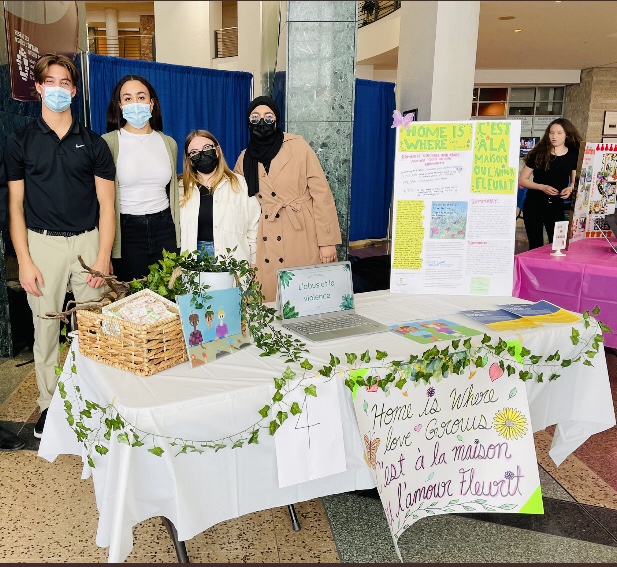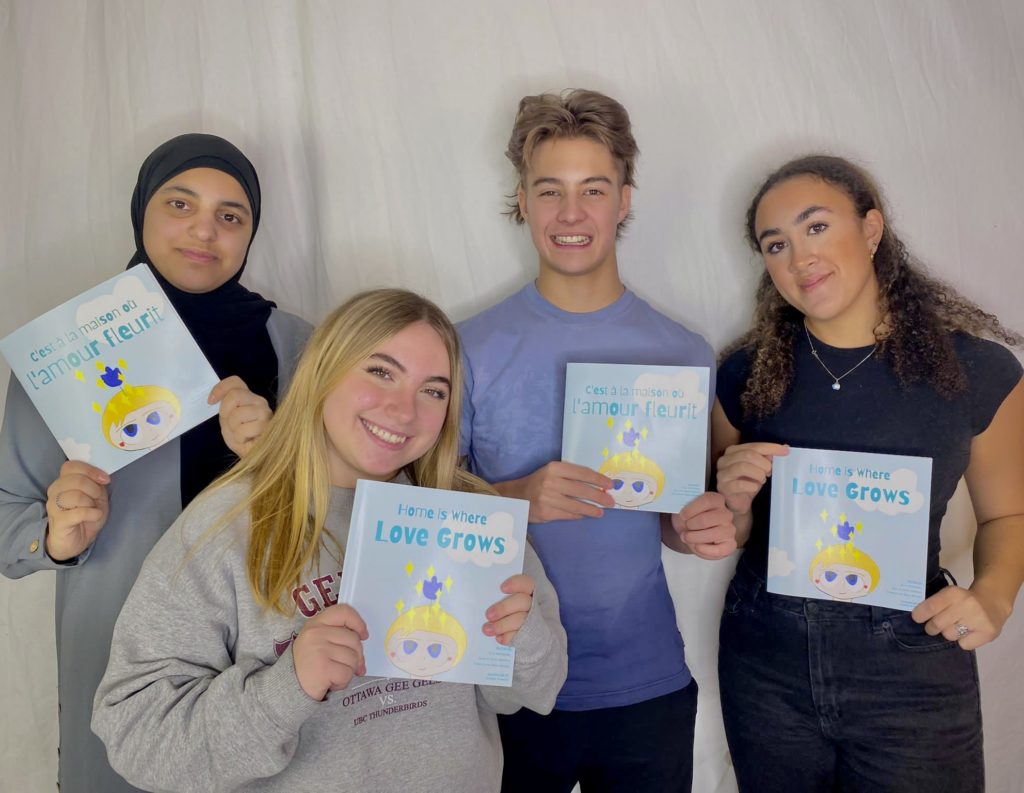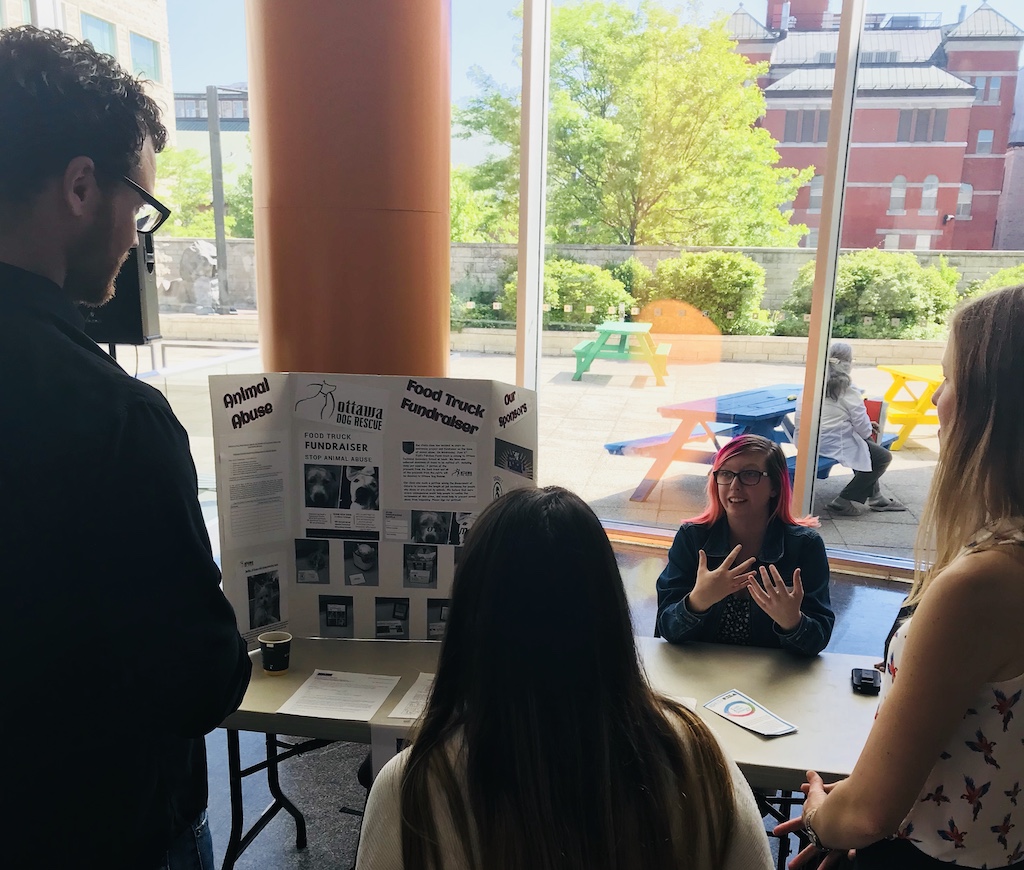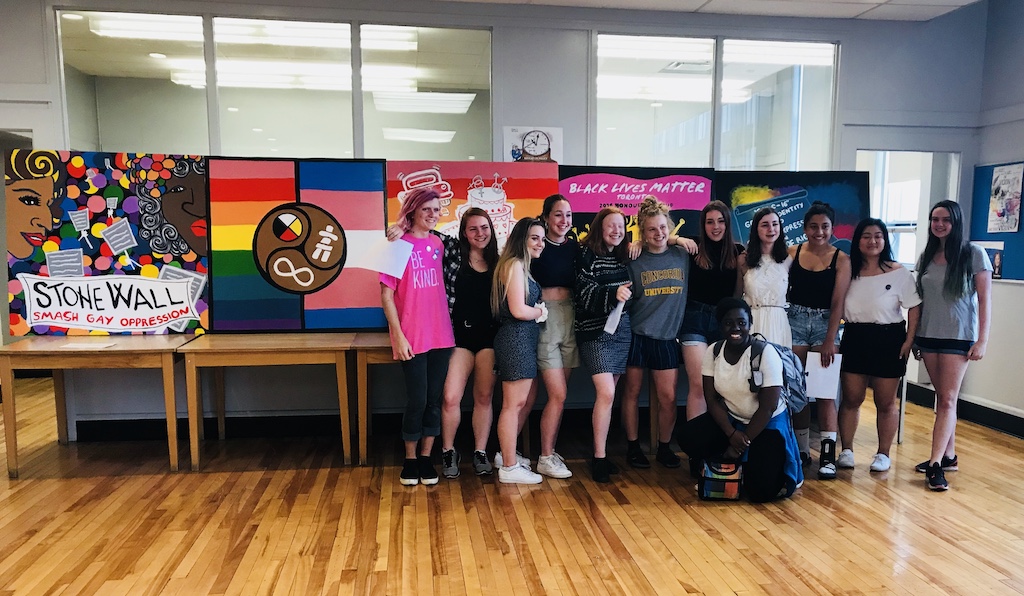Let's Spread the Love this Giving Tuesday
Once upon a time...
We challenged grade 10 students from St. Francis Xavier High School to use their voice to address a social issue in one of our Active Citizenship Initiative programs last year.
The class created a list of issues they wanted to address, and four of the students–Ella, Noah, Raya and Federica–chose domestic abuse as their issue.
“We would ask our teacher if it was in the curriculum at all, or if teachers were taught how to deal with it when they learned to become a teacher and we just found it was something that just wasn’t talked about enough and that we could make a change there.”
At first, the group said they struggled with finding the right medium for their message. After floating around a few ideas, they finally landed on their children’s book idea, which Frederica’s little sister would illustrate.
The book, Home is Where Love Grows, follows the story of two friends, Max and Quincy. The friends live in a world where everyone has flowers growing out of the top of their heads, and all is well until Quincy notices Max’s plant wilting more and more each morning. It becomes Quincy’s mission to help make Max feel better. The plot explores the hidden signs of abuse and teaches youth how to help their friends if they notice these signs.
“I think just because something is difficult, or it’s complicated, it shouldn’t be something that doesn’t get told,” their teacher, Heather Bilder said. “We need to find age-appropriate ways that students can engage with it. This group of students were really thoughtful in the imagery they pulled from their knowledge of metaphor to really go beyond just that surface level… and they looked for meaningful ways that their readers could support a friend.”
In the span of two months, their school project blossomed into a social justice initiative, now being published with the help of Youth Ottawa.
In our ACI programs, classes go through a three-step process:
In 2021, we introduced ACI students to several call-to-action videos from city councillors, allowing them to choose issues that aren’t addressed enough. Bilder’s class took these challenges on and narrowed their focus to six topics, including domestic abuse. The program was combined with a careers class, allowing them to focus on resume-making to “apply” for positions in their groups. Upon choosing their teams, they began to work on steps two and three.
Chapter 2: From School Project to Real Project
In May, the group of students showcased their work at our Youth Action Showcase, which kicked off Ottawa’s first official Youth Week. The Youth Action Showcase was launched by Youth Ottawa in an effort to bring student projects in front of key decision-makers and thought leaders.
“You work on a project for a month and you don’t really get much feedback, but we went to City Hall and the amount of positive feedback and the amount of people that went home and said ‘I really love your story,’ just really motivated our group and made us want to keep on doing this,” Noah said.

Since then, we have met with them bi-weekly from June through August in the hopes of bringing their book into Ottawa libraries in schools, while chatting with them about their goals for the project.
Heather Bilder said she was impressed with their lack of hesitancy in communicating such an important topic, even working on the book throughout the summer.
“I think a lot of people can be critical of younger generations, and I think watching them take on this complicated topic and problem solve and work in collaboration is like, we’re in good hands,” she said.
Over the summer, they worked on creating an acknowledgement page, and it goes as follows*:
*Please note that this is a preview, and the full page can be found in their book.

Chapter 3 - What’s Next?
The team is also seeking support from programs like Market13 that can help them create a free eCommerce website to sell their book online.
“Our goal is to get it in as many kids’ hands as possible, just so that they can really read it and understand what the message is,” Federica said.
Along the way, we are working with the students to refine their presentation pitch and teaching the group of youth about accessing the right grants and looking for other funding opportunities, all with the goal of both their personal and professional growth.

The End…or is it?
This is normally where you’d read “The End” in a story, but these students are nowhere near finished! Their story is just beginning, and they will need your help to turn the next page. Our Giving Tuesday campaign started on Nov. 29 and is now closed. We were able to raise over $4,500 to deliver books to several Ottawa schools and continue funding our ACI program!
As a thank you for each donation, we are sending packs of seeds to donors. These seeds are a symbol of support highlighted throughout the book, and we can’t wait to see what they grow.


